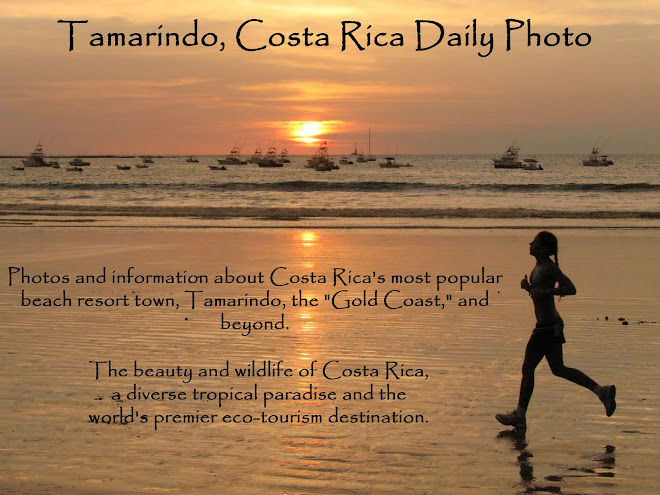+0315+P1000396.jpg) This is an anhinga. They are unusual in several respects. Their feathers are not as water repellent as other water birds, so they can be seen drying out their feathers, as this bird was doing. A secondary reason they spread their wings in the sun is to warm up after getting wet.
This is an anhinga. They are unusual in several respects. Their feathers are not as water repellent as other water birds, so they can be seen drying out their feathers, as this bird was doing. A secondary reason they spread their wings in the sun is to warm up after getting wet.They are 3 feet (90 cm) long and have a wingspan of 3.8 feet (1.1 meters) Their Spanish name is pato aguja, which means needle duck, which is a good name for them.
Anhingas are relatives of cormorants. They differ from cormorants and most other water birds because they spear their fish with their beaks, which have a hook on the end. Most water birds swallow fish rather than spear them. Anhingas thrust their necks as they spear fish, which is why the are sometimes called darters. In addition to fish, anhingas will also eat baby turtles, baby caiman, and snakes.
Because their feathers are not as water repellent as other water birds, when they swim in the water their bodies are submerged and only their long necks stick up above the water, which is why they are sometimes called snake birds. Their scientific name is anhinga anhinga. I don't know why they repeat the word.
My wife took this photo from a raft as she floated on the Penas Blancas River right underneath this anhinga's drying, outstretched wings. That meant that she was shooting up into a bright sky and she had no opportunity to change the angle of the photo. Nevertheless, she got a great shot even though she had to act fast to capture the photo while floating under the bird.

Beautiful photo, great capture! Congratulations!
ReplyDeleteThis one is new to me. Amazing way to catch fish! Great capture!
ReplyDeleteA shot like this is very hard to get and it looks very well done. Such an interesting description of this bird.
ReplyDeleteWow that is really spectacular!
ReplyDeleteI don't think I've ever heard of this bird. Very cool photo! Thanks for visiting my blog!
ReplyDeletewow! an incredible bird!
ReplyDeleteThat's a big bird!
ReplyDelete